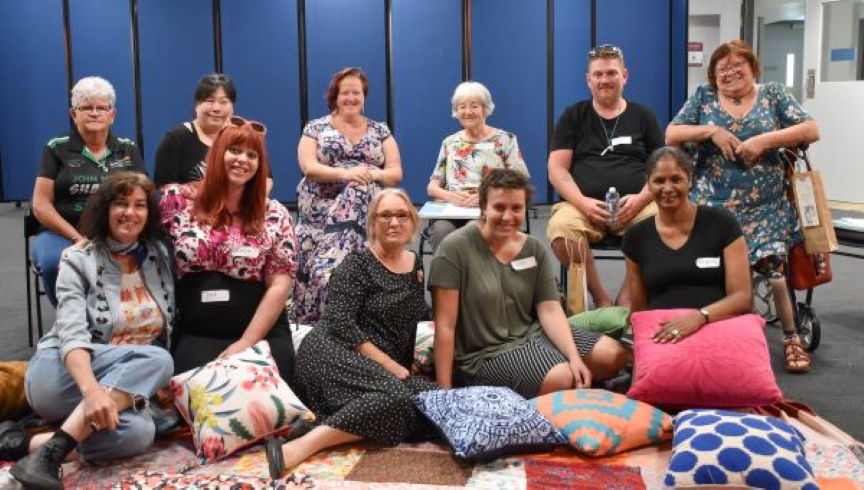
Wide Bay Hospital and Health Service (WBHHS) has partnered with a local artist on a series of mental health projects, to create more welcoming and therapeutic spaces for its consumers and incorporate the voice of lived experience in facility design.
Fraser Coast artist and graphic designer LeeLee West has been engaged to create two unique collaborative art murals and visual identities for WBHHS’s crisis support spaces – The Oasis at Hervey Bay Hospital, and The Lighthouse, which is under construction at Bundaberg Hospital.
She has also illustrated a ‘Welcome’ wall that will greet all visitors to the new Fraser Coast Mental Health Services building, which is set to open its doors at Hervey Bay Hospital later this year.
Robyn Bradley, WBHHS Executive Director of Mental Health and Specialised Services, said the partnership was part of a strategy to ensure the service’s mental health facilities felt more welcoming and reflected what was meaningful to consumers and community members.
“Both The Oasis and The Lighthouse services have been co-designed with consumers every step of the way, so it made sense that consumers should also play an integral part in creating the visual identity of the spaces,” Ms Bradley said.
For each service, more than a dozen people including consumers and peer workers came together in a series of workshops to contribute words and illustrations that were meaningful to them and that reflected their own stories and perspectives.
LeeLee then hand-picked and arranged their individual elements into large collaborative mural designs that have been turned into ‘building wraps’ designed to invite people in.
“The end result has been something unique and special for everyone involved, and has made a huge difference to the look of the crisis support spaces and the way we promote them to the community,” Ms Bradley said.
“But it’s about more than aesthetics. To us, the art projects have been a concerted effort to make our services feel warm and welcoming, connected to place, and to encourage people to seek help in a place of comfort and safety when they need it.
“We’ve already received some consumer feedback that the Oasis artwork has encouraged people to reach out to our service when they’d never been comfortable seeking out mental health care before.”
For LeeLee, working on these purposeful and uplifting projects has been both a privilege and an opportunity to make a difference.
“I’m a past user of mental health services myself, and it was great to facilitate workshops with consumers and staff in the mental health area who are on their own journeys but are committed to improving experiences for others,” she said.
“There was really no separation between me and the participants. We all leaned into our lived experiences to create this work together, and that’s what makes these art pieces and the workshops that led to them so beautiful.
“Our main goal during the face to face and online art workshops was to focus on empathy. We asked the participants, 'If the person reaching out for help was a friend or family member, how would we want them to feel? What visuals/keywords could we use to help us create a space that feels safe, hopeful, calm and welcoming?
“The response was incredible, there were hundreds of drawings to work with at the graphic design stage. The consumers, peer workers and WBHHS staff involved in the Oasis and now the Lighthouse art projects have helped to make these pieces of work meaningful and human.”
LeeLee said the projects had also taught her about the importance of giving a voice to lived experience.
“During a workshop for the Oasis project, a peer worker said something that really resonated with me: ‘Don’t be ashamed of your story – it will inspire others’,” she said.
“It gave me the strength to use my voice, and I was compelled to be honest and authentic about my experiences and why this project was so important to me.
“My lived experience was met with nothing but support, praise and encouragement. It showed me that WBHHS’s commitment to Shattering Mental Health Stigma is more than words; it’s actually happening.
“So don’t be ashamed. There’s always hope. And in the crisis support spaces, the art tells a story of recovery and resilience from many others who’ve reached out and asked for help within our community, too.
For more information about the crisis support spaces, visit https://www.health.qld.gov.au/widebay/html/oasis-crisis-support-space